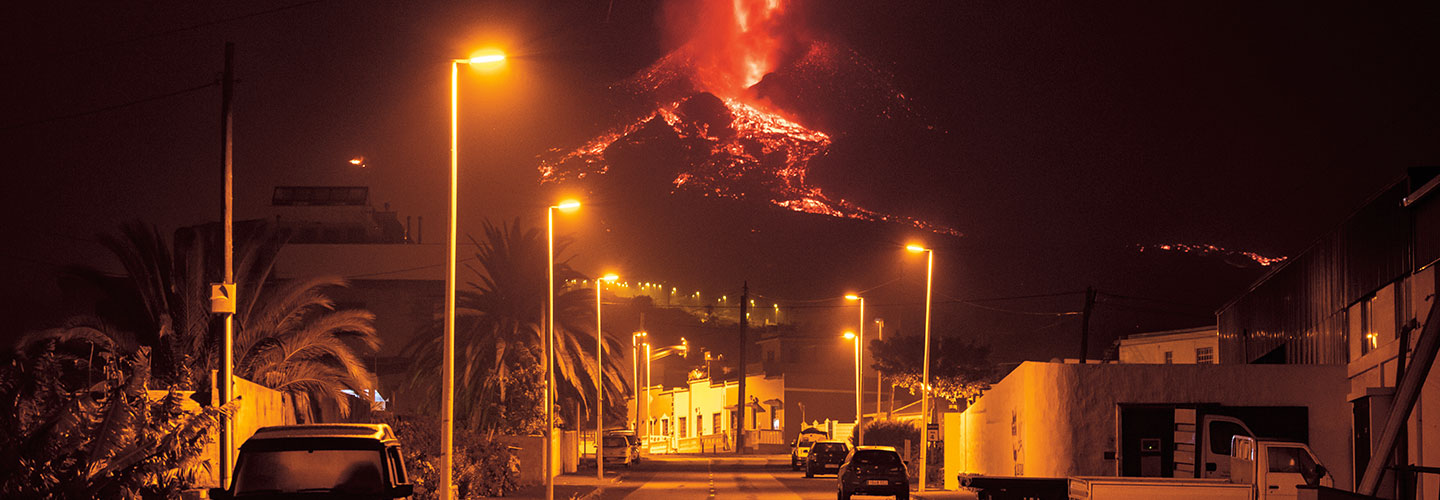Smoke fills the air. Fountains of lava shoot thousands of feet into the sky. A river of fiery rock flows through the streets. Scenes like these have been common on the island of La Palma since September 19. That’s when the Cumbre Vieja (KOOM-breh vee-AY-ha) volcano erupted for the first time in 50 years.
La Palma is one of the Canary Islands, located off the northwest coast of Africa. Since Cumbre Vieja roared back to life in September, about 7,500 people have been forced to evacuate. About 2,000 homes and buildings have been destroyed by the red-hot lava.
The seven islands that make up the Canary Islands were all formed by volcanic eruptions. Researcher David Calvo studies volcanoes in the region. He explains that experts predict how long an eruption will last by the number of earthquakes that occur. Another indicator is the release of an element called sulfur dioxide. As Scholastic News went to press, tests showed there was no end in sight to the current eruption.
“It looks like it’s going to be active for a long time,” says Calvo.

